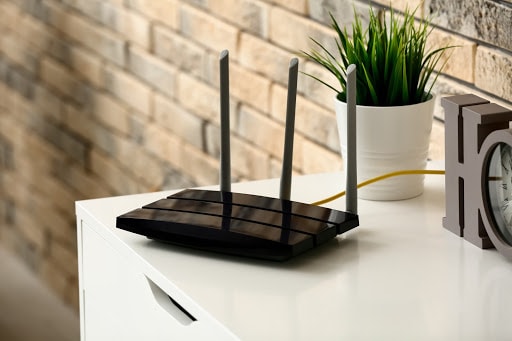Sometimes it starts with a browser page that won’t load. Other times, it’s a video that keeps buffering for far too long. Yes, I’m talking about one of the worst experiences in the internet age: a dropped Wi-Fi connection.
We’ve all been there. The internet gods have let you down. You keep screaming into the darkness, asking why does my Wi-Fi keep disconnecting, but there is no answer. Except there is an answer. That’s right: it’s this article! We’ll walk you through what disconnected Wi-Fi means, what causes it, and how to diagnose and fix it. You’ll be back online long before anyone has a chance to spoil the latest episode of “WandaVision.”
What Does It Mean When Wi-Fi Says Disconnected?
Most of the time, it means that your Wi-Fi signal is just too weak. However, it can also be caused by many other issues, including an overloaded router, network interference, or a router that is randomly shutting off. We’ll break down some of these reasons in the next few sections. Of course, this is all assuming that you are on your home Wi-Fi network. If you are on a public network, it’s probably best to just ask whoever is running the network as you won’t be able to try most of these fixes yourself.
Tips for Testing Your Wi-Fi Connection
We’ll run through some Wi-Fi tips below, but before we go into specifics on how to fix Wi-Fi disconnecting problems, let’s try something very general. There are quite a few reasons why Wi-Fi can fail, and not all of them are readily diagnosable. As with most IT issues, the first thing you should try is to turn it off and back on again.
Warning: Before continuing with this process, make sure that no one else is using your internet connection — roommates, spouse, etc. Trust us, you don’t want to have to explain why they lost their internet connection in the middle of their Fortnite match or the latest episode of “Shameless.”
Most routers should have restart instructions, and you should use those if you can. If not, these should generally work:
- Unplug the router’s power cord. If it has batteries, remove those as well.
- Wait two to five minutes.
- Replace the batteries and plug the router back in.
- Wait five minutes to let the router fully boot.
If the problem goes away, you can move on with your life, happy with the knowledge that you fixed your tech problems in three minutes instead of three hours. If the problem persists or comes back, it’s time to move on to more testing.

Know your equipment
You don’t want to run back and forth to the router during this process, so take out your phone and just grab a picture of the router’s label. That way you can look up the model to get any specs you need as you run through this article.
Update your router firmware
Router updates don’t come out as often as updates for your favorite mobile apps, but they still happen. You should always make sure your router is running the latest firmware updates, and you’d be surprised how often it makes your problems go away. Head over to the manufacturer’s website where you’ll find instructions on how to update your particular model. As part of that process, you’ll need to find out how to log into your router.
Update your adapter drivers
If your issue is occurring on several devices, this is probably not going to help. However, if the issue is on a single desktop or laptop, it’s always best to try this before you go down any more complicated rabbit holes.
Making testing easier
If the problem is occurring with multiple devices, you should use a laptop, tablet, or mobile phone for testing. Desktops are great, but you are going to want to be able to move around for some of these steps.
Wi-Fi Problem #1: Your Wi-Fi Signal Strength Is Weak
Wi-Fi signals can only reach so far, and walls or other obstructions can block the signal, making it trail off even sooner. When your Wi-Fi keeps disconnecting, distance is often the reason, and it’s an easy one to test.

How to diagnose weak Wi-Fi signals
If your device is mobile, just bring it closer to your router. If the connection becomes more stable, you have your answer. If the instability remains, it’s time to move on down the list and try something new.
If the problem is only occurring on a desktop computer, you are probably better off trying some of the later possibilities and coming back to this one.
How to fix weak Wi-Fi
One obvious solution is just to move closer to your router, but that’s not always practical. You shouldn’t have to hover in the dark corner of your living room just to get a good internet signal. Fortunately, there is more you can do.
First, check to see what Wi-Fi standard your router has. Remember that picture you took of your router’s label earlier? It’s time to check it for something that says “Wireless N Router”, “Dual-band Wireless AC/N”, or something along those lines. If the letter is “N” or “AC”, you are probably fine. If it is “A”, “B”, or “G”, your router is getting old, and an upgrade might be in order. The newer standards are much better at alleviating exactly the types of problems you are running into here.
Next, it’s time to clear the easy obstructions. Make sure your router isn’t hidden away behind a TV or a bookshelf. Moving your router into the open, with its antennae facing up, can have a huge impact on your signal strength.
If none of that fixed your problem, you might just be pushing the limit of your router’s range. Don’t give up on your dreams, though, because there is still a solution to your troubles, and it’s called a Wi-Fi range extender. Every Wi-Fi device has a limited range, and Wi-Fi extenders are the best way to surpass that limit, allowing your Wi-Fi signal to reach whole new sections of your home.
Wi-Fi Problem #2: Your Wi-Fi Router Is Overloaded
Every device has its limits, and we cord cutters are notorious for testing the limits of our internet-connected devices. Your router is no different.

How to diagnose an overloaded Wi-Fi router
Do you remember that step we took earlier: restarting the router? If that fixed the problem but it keeps coming back, router overload is a likely cause.
Another good test is to turn off the Wi-Fi on most of your devices. If you don’t know how to disconnect Wi-FI on any particular device, you can Google it or just turn off the device completely. A powered-down device can’t interfere with your signal.
After you take that step, you’ll want to restart your router again. Leaving those other devices off, see if your remaining devices are still having network issues. If your internet troubles have gone away, you were likely overloading your router. If your Wi-Fi is still unstable, it’s time to move on to the next idea.
How to fix an overloaded Wi-Fi router
Do you remember the olden days when you only had one to two Wi-Fi devices instead of the large number you have today? If your router remembers those days, too, it might be time to think about buying a replacement router. In the section on Wi-Fi signal strength, We talked about how to check the Wi-Fi standard of your router. The same check is useful here. Any router that is on a standard older than “N” or “AC” may not be modern enough for your current device count.
If your router is relatively new, let’s talk about device count. Do you frequently have more than 10 devices using your Wi-FI at once? You can be honest, this is a judgment-free zone — by my last count, I had six devices just within arm’s reach of my chair, not even counting my streaming devices. If that sounds like you, it might be time to add a second router.
Wi-Fi Problem #3: Other Wi-Fi Networks or Devices Are Interfering
Football games have referees to watch out for interference, but your Wi-Fi network only has you. It’s not just other Wi-Fi hotspots that can be interfering — cordless phones, garage door openers, baby monitors, and microwave ovens can all interfere with your Wi-Fi signal.
Wi-Fi networks operate in one of two frequency bands: 2.4 GHz and 5 GHz. Older routers usually only operate at 2.4 GHz. Almost all newer routers work at 5 GHz, and many are what are called dual-band routers, which means they have the ability to switch back and forth between the two bands. Within those bands are a series of smaller bands known as channels. The 2.4 GHz band has 11 channels and 5 GHz has 45. Routers generally have the ability to access any channel within their band, so dual-band routers have a whopping 56 total bands available to them.
For most people on most days, these are just cool bits of trivia. But when other devices are interfering with your internet connection, these bands and channels are your way back to the cord cutter lifestyle and all its high-speed streaming glory. If your current channel is experiencing interference, you can move to a different channel to try to get a clear signal. And yes, the channels are ordered, so moving five channels away is better than one. Not that it will matter, since I’m going to show you how to find the ideal channel without trial and error.
How to diagnose Wi-Fi interference
You could start unplugging every other device in your home, but that’s a bit extreme. Besides, there’s always a chance that the interfering device isn’t even yours. Instead, we’ll just implement the fix and see if it works. Don’t worry, it’s incredibly easy to undo this step if it doesn’t work, and there’s no harm in trying it — as long as nobody else is actively using your Wi-Fi.
How to fix Wi-Fi interference
Let’s break this into two parts. First, we’ll find your ideal channel. Then, we’ll get your router set to that channel. If all goes well, you’ll be interference-free faster than you can say “I fly my Wi-Fi” five times fast.
If you have a Mac, finding your wireless channel is going to be a breeze. Here’s how we’ll do it.
- Open Wireless Diagnostics from your Applications folder or by typing “Wireless Diagnostics” ’ into your OS search bar.
- Ignore the prompts and instead open the Window menu in the menu bar at the top of your screen. Select “Scan” from that menu.
- In the new window, click the “Scan Now” button.
- Once the scan finishes, you’ll see items for Best 2.4 GHz and/or Best 5GHz under the summary on the left side of the window. Those are what we are looking for, so write them down.
If you have a Windows machine, there’s no built-in software that can find your best Wi-Fi channel, so we’ll have to use a third-party app. We suggest NirSoft’s WifiInfoView, On their page, you’ll find instructions and a download link. Aside from the extra step of downloading the app, it’s just as easy as the above Mac process. Be sure to write down the recommended channels as you’ll need them in step two.
Okay, that was step one. For step two, we’ll be changing the channel on your Wi-Fi router. You should already know how to log in to your router from the section on updating your router firmware, so go ahead and log in now. You are looking for a menu that says “Wireless” or “Wi-Fi” settings. From there, look for an item that says “Channel” or perhaps “Wi-Fi Channel.” Go ahead and change it to the channel you found in step one. You may have to hit a “Save” or “Apply” button for the change to take effect. If you have a dual-band router, you’ll likely have to change both the 2.4 GHz and 5 GHz channels, which may be in separate tabs or pages.
If you don’t see the right menu or can’t find the setting, try doing a Google search for your router brand and ”set channel”, e.g., “Netgear set channel”. If in doubt, it’s always best to check for router-specific instructions online. If you accidentally change the wrong setting in your router, you could lose internet service, making it a lot harder to Google for solutions.
Why Wi-Fi Keeps Disconnecting: Android Specifics
If your Android device is the only one having connection issues, the issue probably isn’t with your router. The customizability of Android devices is great, but sometimes it can lead to hard-to-diagnose technical issues. When your Android Wi-Fi stops working, there are a few steps that will often fix the issue.

1. Restart your phone
Yes, it’s another “turn it off and back on again” step. So go ahead and restart your phone to see if it solves the issue.
2. Reconnect to the network
Go into your Wi-Fi settings and tell your phone to forget the problematic network. Then re-add it and see if that fixes the issue.
3. Turn off potentially interfering apps
If you are running an antivirus program, VPN, internet optimization app, or anything else that is supposed to impact your internet connection, go ahead and temporarily deactivate it. Now reconnect to your network and see if the problem persists. If that works, you’ll likely need to do some more investigating to determine which app was causing the issue and why, but at least you’ve narrowed it down.
4. Reset your phone’s network settings
These instructions will differ depending on what version of Android’s OS you are running, so you may need to look up instructions specific to your version. You can generally find them by Googling “reset network settings android” with the current version of your Android software, which you can find in the “About Phone” or “About Device” section of your phone’s settings.
- Go into your phone’s settings menu and select either “System” or “General Management.”
- You’ll see an option for either “Reset” or “Reset Options” — select that.
- Click “Reset Network Settings” and click confirm.
Your phone will likely restart as part of this process. Don’t worry, that’s perfectly normal. Once it comes back, go ahead and reconnect to your network.
When All Else Fails, Call for Help
The above ideas should solve most issues, but there is no comprehensive guide for everything that can go wrong with your Wi-Fi. For that, there is technical support. If you’re renting your router, you’ll likely want to contact your internet service provider to get help. However, if you bought your router, it may be best to contact the manufacturer first.
There’s a good chance that either of them will ask you to go through some of the same steps you’ve already done above, so be prepared to tell them what you’ve already done.